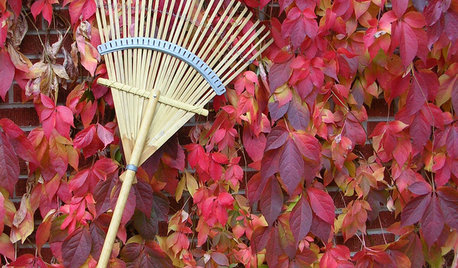Oak Leaf Hydrangea Transplant HELP!
ken859
13 years ago
Featured Answer
Sort by:Oldest
Comments (17)
wild_belief
13 years agoladywindsurfer
13 years agoRelated Professionals
Arlington Landscape Architects & Landscape Designers · Beavercreek Landscape Architects & Landscape Designers · Brooklyn Center Landscape Architects & Landscape Designers · Surprise Landscape Contractors · Cupertino Landscape Contractors · El Reno Landscape Contractors · New Cassel Landscape Contractors · Panama City Beach Landscape Contractors · Pomona Landscape Contractors · Roswell Landscape Contractors · Tigard Landscape Contractors · Tooele Siding & Exteriors · West Bloomfield Township Siding & Exteriors · Oakville Siding & Exteriors · North Richland Hills Siding & Exteriorsken859
13 years agoken859
12 years agomehearty
12 years agohayden5
6 years agoluis_pr
6 years agolast modified: 6 years agogardengal48 (PNW Z8/9)
6 years ago56steps
4 years agoMelissa Herrin
4 years agoluis_pr
4 years agoken859 .
4 years agoken859 .
last yearforever_a_newbie_VA8
last yearcharles kidder
last yearken859 .
last year
Related Stories

FLOWERSWhy You Should Give Hydrangeas a Place in Your Yard
The exuberant mop-headed beauties evoke dreams of an endless summer by the sea
Full Story
FLOWERS AND PLANTSHydrangea Arborescens Illuminates Garden Borders and Paths
This long-blooming eastern North American native shrub finds a home in landscapes around the world
Full Story
TREESGreat Design Plant: Southern Live Oak Offers an Unbeatable Canopy
Keep it dense or prune it for more light. No matter how you grow Quercus virginiana, it’s a majestic addition to its native landscape
Full Story
FARM YOUR YARDCool-Season Vegetables: How to Grow Lettuce
Leaf, butterhead, crisphead or romaine — lettuce is best harvested in the cool weather of spring and fall
Full Story
HOUZZ TOURSMy Houzz: Stately Southern Charm in a Federalist-Style Home
Moss-covered oak trees, European antiques and contemporary style set off this Louisiana home
Full Story
GARDENING GUIDESYour November Garden Checklist
What to do around the U.S. this month to help your garden thrive — when you're not admiring fall's brilliant colors, that is
Full Story
GARDENING GUIDESMake Sure You Read This Before Buying New Plants
Follow these 10 plant-selection tips to avoid buyer’s remorse
Full Story
LANDSCAPE DESIGNThe Unparalleled Power of Trees
Discover the beauty and magic of trees, and why a landscape without them just isn't the same
Full Story
ARBOR DAY8 Reasons to Plant a Great Tree
Beauty is its own reward, but the benefits of planting the right tree in the right place go way beyond looks
Full Story
LANDSCAPE DESIGNGarden Overhaul: Which Plants Should Stay, Which Should Go?
Learning how to inventory your plants is the first step in dealing with an overgrown landscape
Full Story







ken859 .